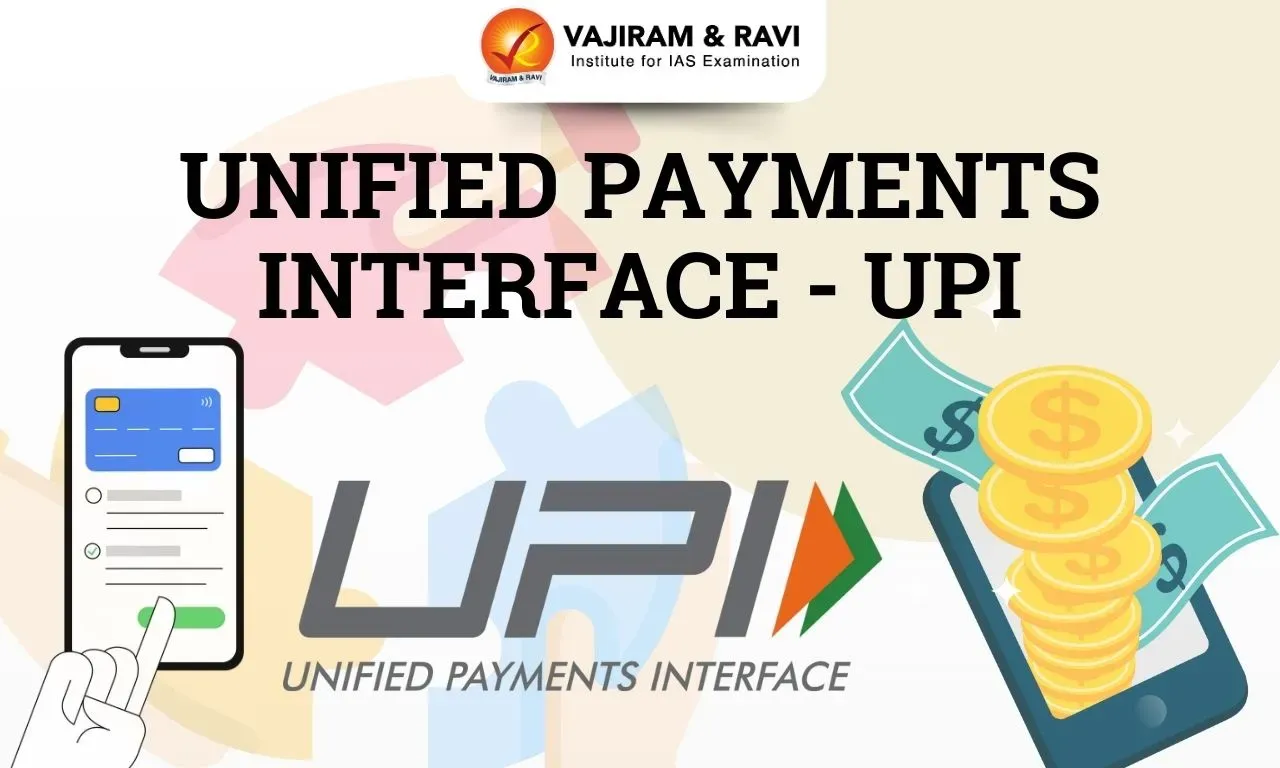Unified Payments Interface or UPI is a real-time digital payment system that enables instant money transfers between bank accounts using a mobile platform. Developed by the National Payments Corporation of India (NPCI) and launched in 2016, UPI simplifies payments by using a Virtual Payment Address (VPA), making transactions secure and accessible 24/7.
Since its inception, UPI has transformed India's payment landscape, driving financial inclusion and creating a cashless economy. It enables a range of features, including instant transfers, QR code payments, and recurring transactions, making it a preferred choice for millions of users. UPI is also accepted for international merchant payments in seven countries including UAE, France, Singapore, etc.
What is UPI?
Unified Payments Interface or UPI is a real-time payment system developed by the National Payments Corporation of India (NPCI) that enables instant money transfers between two bank accounts using a mobile platform. Launched in 2016, UPI revolutionized the digital payments landscape by allowing users to transfer funds instantly-24x7 through mobile apps using just a Virtual Payment Address (VPA), which negates the need to share sensitive bank details.
UPI Features
UPI offers a wide range of features that make it one of the most popular and user-friendly digital payment platforms in India. Its ability to handle real-time transactions, integrate multiple bank accounts, and offer versatile payment methods has revolutionized the way people conduct financial transactions. Below are some key features of UPI:
- Instant transfers: Users can transfer money to any bank account 24/7, ensuring seamless and fast payments at any time.
- Single app: Users can access multiple bank accounts through a single app, eliminating the need for multiple banking applications.
- Multiple payment methods: UPI allows users to send money using a mobile number, virtual address (VPA), or account number, providing flexible options for transferring funds.
- QR codes: Users can make payments by scanning QR codes, offering a quick and secure way to pay for goods and services.
- Recurring payments: UPI enables users to set up AutoPay for recurring payments like utility bills and subscriptions, streamlining regular transactions.
- Peer-to-peer requests: UPI allows users to schedule and pay collect requests from others, enabling hassle-free person-to-person payments.
- Security: UPI transactions are secured through two-factor authentication, ensuring secure transfers.
Also Check: UPI vs ULI
UPI Recent Developments
UPI has seen significant enhancements and new features since its inception, expanding its capabilities and making transactions even more convenient for users. The introduction of UPI 2.0, voice-based payments, and the upcoming UPI vouchers are notable developments that have broadened the platform’s appeal and functionality.
- Conversational Voice Payments: At the Global Fintech Fest 2024, NPCI unveiled "Conversational Voice Payments" for UPI. This feature allows customers to complete transactions by using their voice.
- UPI 2.0: Launched on 16 August 2018, UPI 2.0 enabled users to link their overdraft accounts to a UPI handle. It also introduced the ability to pre-authorize transactions by issuing a mandate to specific merchants, view and store invoices for each transaction, and use an AutoPay facility for recurring payments.
- UPI Lite: UPI Lite was introduced to facilitate offline transactions. It allows users to scan QR codes and process debit transactions even without an internet connection. Recently the RBI has approved an increase in the transaction limit in UPI Lite to ₹1,000 per transaction, with a total limit of ₹5,000.
- UPI Vouchers: This feature allows users to transfer prepaid vouchers linked to the recipient's smartphone number.
- UPI 123PAY: In 2021, as part of a financial inclusion initiative, NPCI and fintech start-up Naffa Innovations launched UPI 123PAY. This voice-based payment service enables feature phone users in low-connectivity areas to make UPI transactions using voice commands.
- Increase in UPI Payment Limit: On 8 December 2023, the RBI raised the UPI payment limit for transactions related to tax payments, hospitals and educational institutions from ₹100,000 to ₹500,000.
UPI International Adoption
The international expansion of UPI has been a strategic priority for the Reserve Bank of India (RBI), as outlined in the Payments Vision 2025 document. The Ministry of External Affairs (MEA) is actively promoting UPI’s global reach, driven by geopolitical factors.
- UPI Accepted countries: Other than India, international merchant payments are accepted under UPI in seven countries including UAE, France, Singapore, Bhutan, Mauritius, Nepal and Sri Lanka.
- NRIs: Non-Resident Indians (NRIs) in countries like Australia, Canada, France, Hong Kong, Malaysia, Oman, Qatar, Saudi Arabia, Singapore, UAE, UK, and USA can use UPI to make INR transactions in India through their registered overseas mobile numbers.
- Foreign tourists: Tourists visiting India can use UPI through the "UPI One World" service, which requires full KYC verification with their passport and valid visa.
UPI Significance
UPI has become a cornerstone of India's digital economy, significantly influencing financial inclusion, ease of business, and innovation in payment systems. Its widespread adoption has not only simplified transactions for individuals and businesses but has also propelled India towards a more cashless and efficient economy.
- Boost to digital payments: As of FY 2023-24, digital payment transaction volumes grew to ₹18,737 crore, a remarkable increase from ₹2,071 crore in FY 2017-18. This surge highlights the widespread adoption and trust in UPI, which has become a cornerstone of India’s digital payment infrastructure.
- Financial inclusion: UPI has played a pivotal role in promoting financial inclusion, particularly in rural and underserved areas, by making banking services accessible to a larger segment of the population.
- Ease of doing business: UPI simplifies transactions for businesses of all sizes, especially small vendors and street merchants, by allowing them to accept digital payments without requiring expensive hardware.
- Encouraging innovation: The UPI framework has spurred numerous fintech innovations, leading to the development of diverse payment solutions and driving competition in the digital payment industry.
UPI Challenges
While UPI has revolutionized digital payments in India, it faces several challenges that need to be addressed to ensure its continued success and scalability. These challenges range from cybersecurity concerns to infrastructure limitations, which could hinder its growth if not managed effectively.
- Cybersecurity concerns: As UPI transactions increase, so does the risk of fraud and cyberattacks. Ensuring robust security measures to protect user data and prevent fraudulent activities is crucial.
- Scalability issues: With the growing number of users and transactions, UPI must ensure its infrastructure can handle large volumes of payments without experiencing delays or downtime.
- Merchant adoption abroad: While UPI is gaining international recognition, the widespread acceptance of UPI by merchants outside of India remains a challenge, with many countries still relying on their local payment systems.
- Dependence on Internet connectivity: Although UPI Lite has been introduced to facilitate offline transactions, the core UPI system still requires a stable Internet connection, which may not always be available in rural or remote areas.
UPI UPSC PYQs
Question 1: Which of the following is a most likely consequence of implementing the 'Unified Payments Interface (UPI)'? (UPSC Prelims 2017)
(a) Mobile wallets will not be necessary for online payments.
(b) Digital currency will totally replace the physical currency in about two decades.
(c) FDI inflows will drastically increase.
(d) Direct transfer of subsidies to poor people will become very effective.
Ans. (a)
Question 2: Consider the following countries: (UPSC Prelims 2025)
- United Arab Emirates
- France
- Germany
- Singapore
- Bangladesh
How many countries amongst the above are there other than India where international merchant payments are accepted under UPI?
a) Only two
b) Only three
c) Only four
d) All the five
Ans: (b)
Last updated on December, 2025
→ Check out the latest UPSC Syllabus 2026 here.
→ Join Vajiram & Ravi’s Interview Guidance Programme for expert help to crack your final UPSC stage.
→ UPSC Mains Result 2025 is now out.
→ UPSC Notification 2026 is scheduled to be released on January 14, 2026.
→ UPSC Calendar 2026 is released on 15th May, 2025.
→ The UPSC Vacancy 2025 were released 1129, out of which 979 were for UPSC CSE and remaining 150 are for UPSC IFoS.
→ UPSC Prelims 2026 will be conducted on 24th May, 2026 & UPSC Mains 2026 will be conducted on 21st August 2026.
→ The UPSC Selection Process is of 3 stages-Prelims, Mains and Interview.
→ UPSC Result 2024 is released with latest UPSC Marksheet 2024. Check Now!
→ UPSC Prelims Result 2025 is out now for the CSE held on 25 May 2025.
→ UPSC Toppers List 2024 is released now. Shakti Dubey is UPSC AIR 1 2024 Topper.
→ UPSC Prelims Question Paper 2025 and Unofficial Prelims Answer Key 2025 are available now.
→ UPSC Mains Question Paper 2025 is out for Essay, GS 1, 2, 3 & GS 4.
→ UPSC Mains Indian Language Question Paper 2025 is now out.
→ UPSC Mains Optional Question Paper 2025 is now out.
→ Also check Best IAS Coaching in Delhi
UPI FAQs
Q1. What is UPI?+
Q2. Who invented UPI?+
Q3. Is Google Pay an UPI?+
Q4. What is the UPI limit?+
Q5. Which foreign country uses UPI?+

















